Spinning Rolags Long Draw on a Wheel & Spindle is Magical!
Over the last couple of weeks, we’ve been all about making rolags on our blending boards. While we’re still working on our prep, many of us like to pause and spin samples to see how our fibre will become yarn. In this video and blog post, Felicia dives into spinning her rolags long draw while also experimenting with a worsted-style draft to compare the rolag spinning process. In this post, she takes us step-by-step through how to spin long draw with rolags!
This series of posts is part of Fibre Prep February, and while there are endless topics we could explore, the team all agreed that rolags and blending boards would be a fun and inspiring topic to focus on. Our deep dive was also sparked by Debbie Held’s book, The Spinniner’s Blending Board Bible, which we’re excited to have available for preorder!
We have a full video tutorial you can watch here or on our SweetGeorgia YouTube channel, along with step-by-step written instructions below packed with tips, tricks, and plenty of photos to guide you through the process.
Why We Make Rolags
Rolags create a spiral, sponge-like structure and, when spun, make excellent yarn for warmth and insulation. This style of fibre preparation is known as a woollen prep, designed for soft, warm, and lofty yarns. But just because the fibre is prepared woollen doesn’t mean you have to spin it that way!
Woollen vs. Semi Yarns
Since rolags are a woollen-prepared fibre, spinning them in a woollen method, like a long draw, is ideal for enhancing this preparation. However, you can also experiment with a worsted-style draft, creating what is often called a semi-yarn.
Now, spinners often debate how to define these blends of techniques. Some say if the fibre prep is woollen but spun worsted, the yarn should be called semi-woollen; others argue that the spinning method is what determines the name, making it semi-worsted. Either way, whenever a yarn blends both woollen and worsted qualities, we call it “semi.”
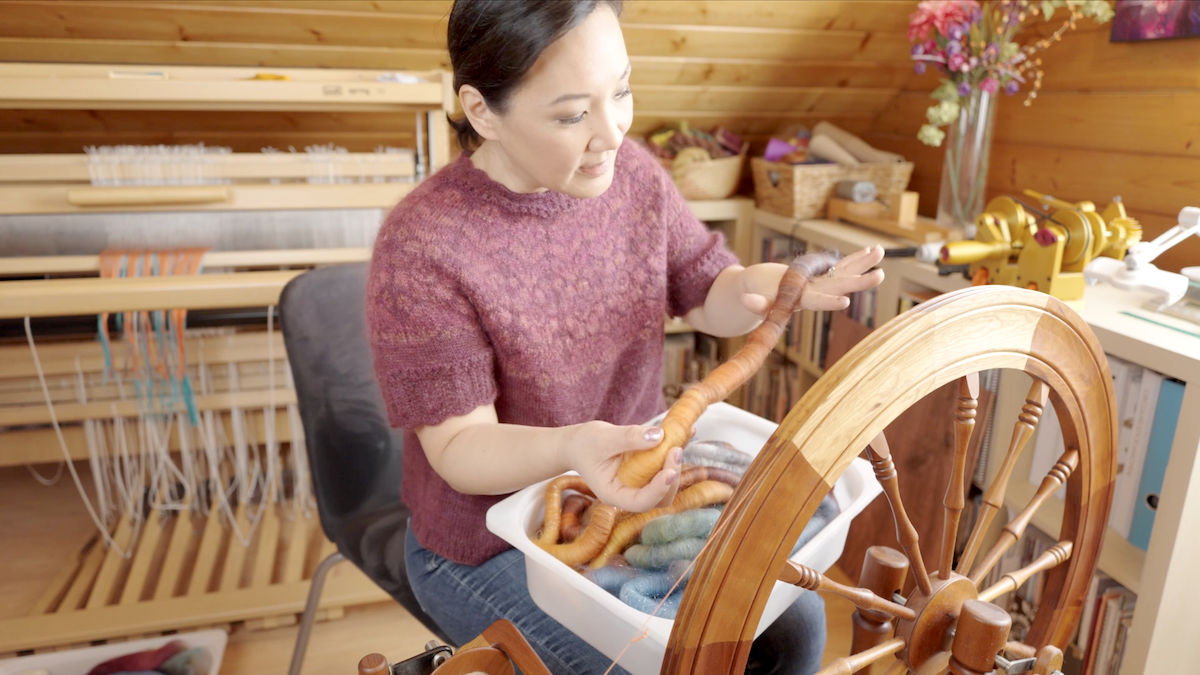
The two ways we will cover on how to spin rolags are:
- Long draw (woollen): Creates a light and lofty yarn.
- Short backward draw (worsted): Results in a smoother and more structured yarn.
The Meditative Aspect of Long Draw
Long-draw spinning isn’t just a technique; it’s an experience. Unlike other methods, it demands your full attention, drawing you into a rhythm that feels both immersive and meditative. Unlike other spinning methods that you are able to spin while watching TV, long draw encourages you to be present with your fibre. It mesmerizes you as you spin, and not only is it faster, producing more yarn than worsted spinning, but it is magical to watch it transform!
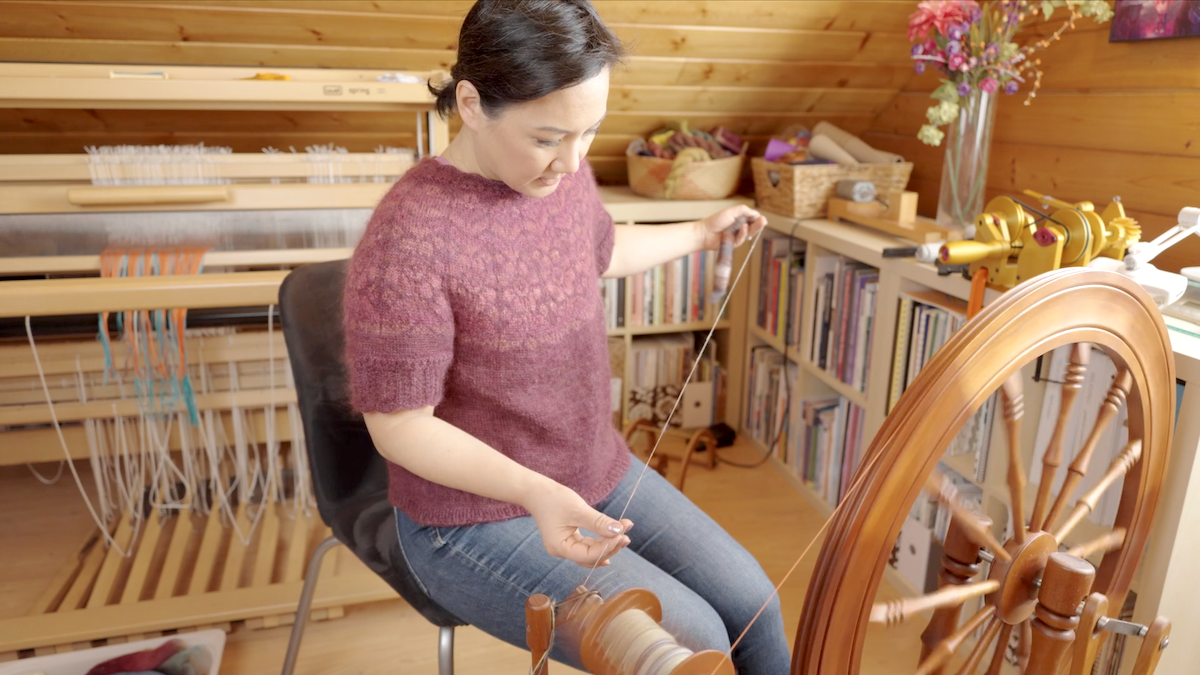
Preparing Rolags
As Felicia mentioned in the Comparing Blending Boards: Ashford vs. Loüet blog post, she made 47 rolags. With this many rolags, we can explore some of the many options we can spin rolags. Here are just a few:
Break Them into Smaller Rolags for Easier Handling: Rolags made on a blending board can be quite long, and spinning the entire rolag can be a lot of fibre to manage. To make them easier to spin, you can gently pull them apart into smaller sections, reducing their size by half.
Spin Them in a Controlled Colour Order: While rolags naturally mix colours in fun and unexpected ways, a little planning can help you control the colours in your spinning to create stripes or gradients.
Spin Them in a Random Colour Order: Sometimes, the fun is in letting go and seeing where the colours take you! Felicia gave this a try and ended up with a yarn sample full of rich, blended hues, packed with both visual interest and beautiful optical mixing.
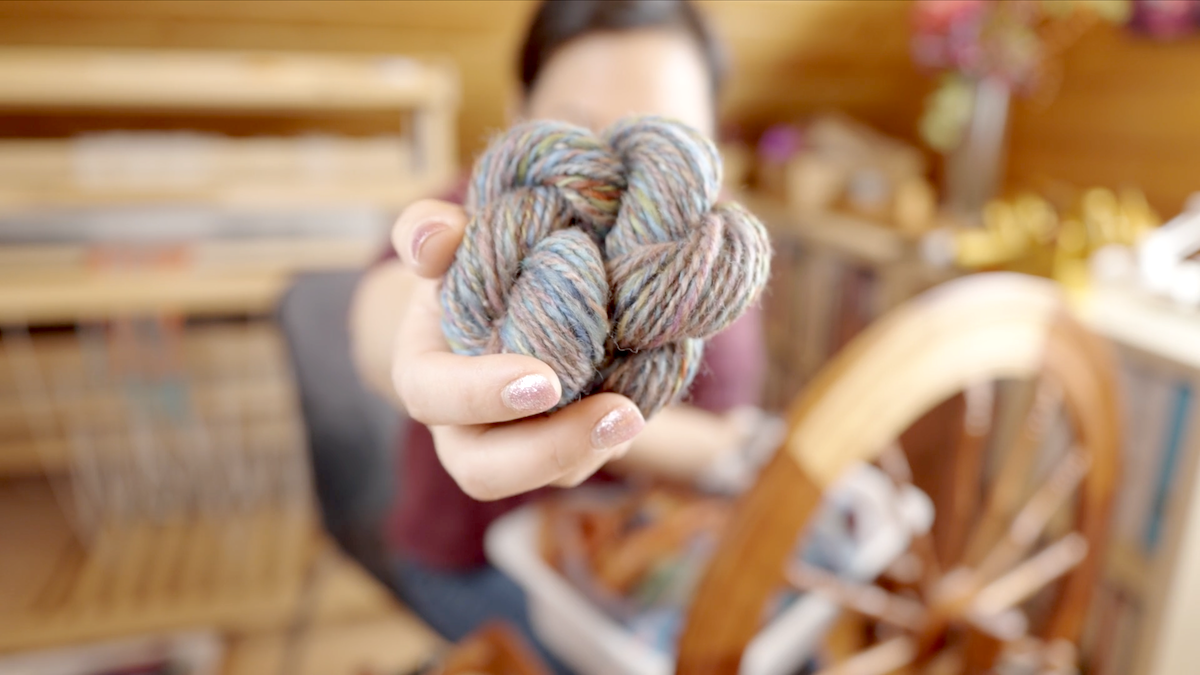
Sampling Rolags
These rolags come from the Colour Collab, colourways inspired by our spinning instructors. To make them, Felicia pulled colours from multiple hand-dyed braids, exploring different ways to blend them. To see how the colours would play together, she paused to ply some of her singles into mini samples, and the results were amazing; shown above.
Sampling like this is a quick and easy way to check if your prep is giving you the look and feel you want before committing to a full project. Since most rolags weigh around 3 grams each, taking just one or two rolags, or 3 to 6 grams, is a small investment of fibre to ensure the rest of your spinning turns out exactly as you envisioned.
Spinning Courses that Explore Drafting Styles:
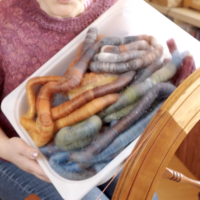
How to Spin Rolags Long Draw (and more!)
Equipment
-
1 Spinning Wheel
-
1 Supported Spindle & Bowl
Materials
- 1-2 Rolags
Instructions
Short-Backward Draw (Worsted/Semi)
-
If you're new to rolags, this is a great way to get comfortable with this style of fibre preparation. For a worsted draw, we do not allow the twist to get between our hands. Allow the twist to build up to your forward hand and pinch the twist to keep it from moving between your hands.
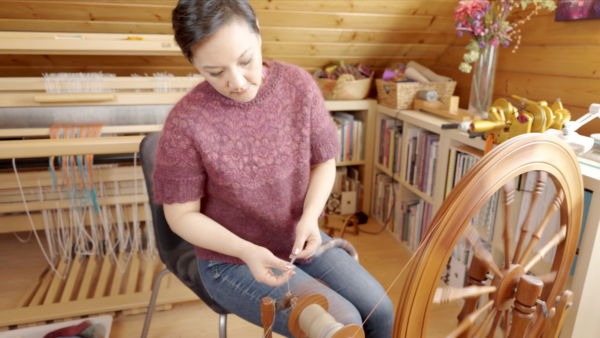
-
With your fibre supply hand, draft back.
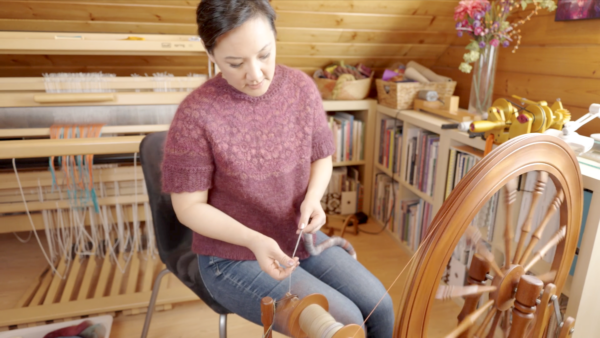
-
Next, bring your forward to meet the back hand, sliding back over the newly drafted fibre and allowing the twist to move with it. Remember to keep the twist in front of the forward hand.
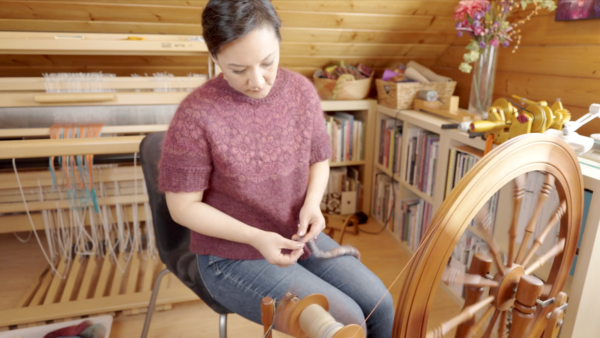
-
Continue the first three steps two or three more times.
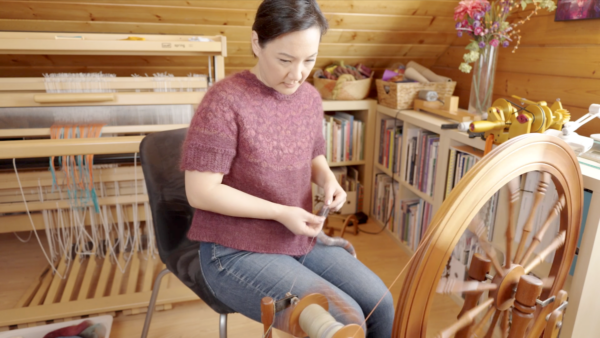
-
Now, feed the yarn onto the bobbin!
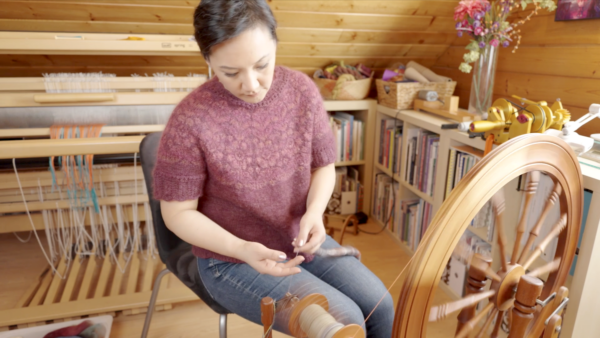
Long Draw on a Wheel (Woollen)
-
This spinning style works beautifully with rolags, creating a light and airy yarn. To start, let the twist build up in front of your forward hand; think of it as the gatekeeper, controlling how and when the twist will move into the fibre.
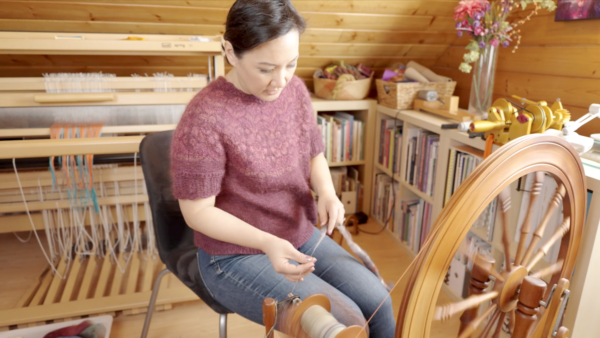
-
Let the twist build up, and as you release your forward hand, your back hand will draft back, allowing the twist to move into the drafted fibre.
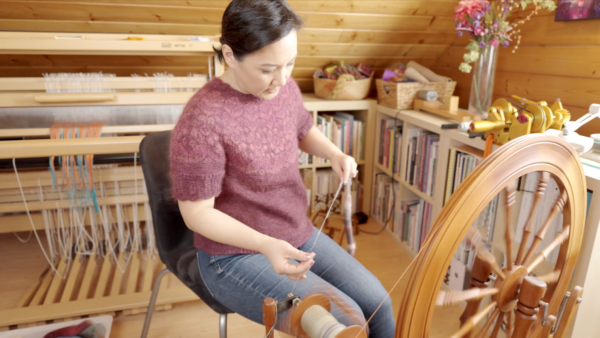
-
By pulling against the twist, you'll smooth out any uneven parts of the newly formed yarn.
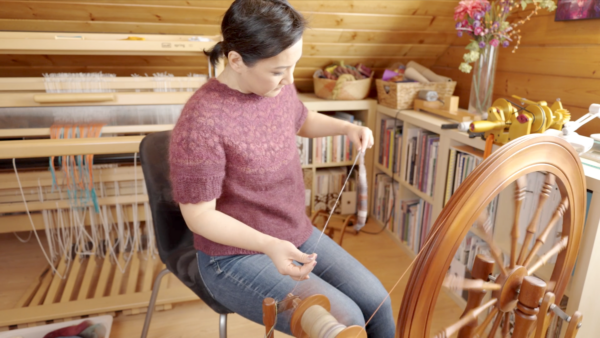
-
Use your forward hand to open and close, controlling the amount of twist that moves between your hands.
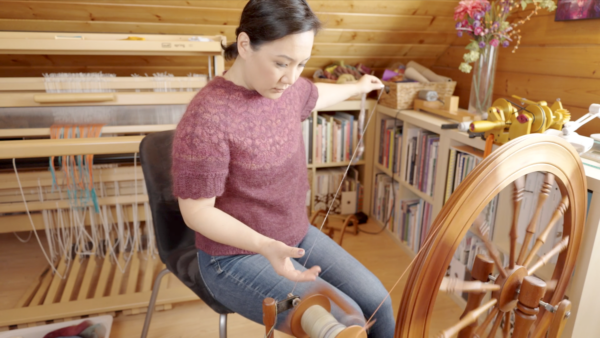
-
TIP: If you're working with fibre that has multiple colours, watch how the colours shift in the singles to help gauge the amount of twist building in the yarn.
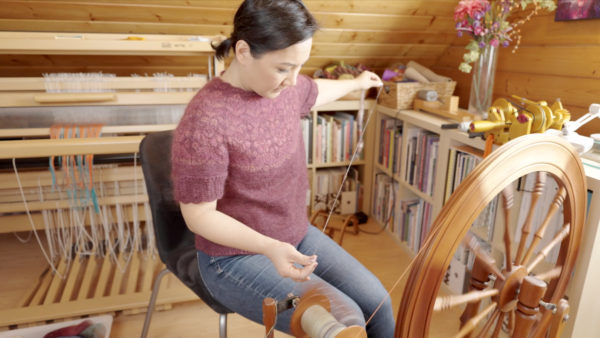
-
Ensure there’s enough twist to be strong enough to ply with, and when you feel it's right, feed the yarn onto the bobbin.
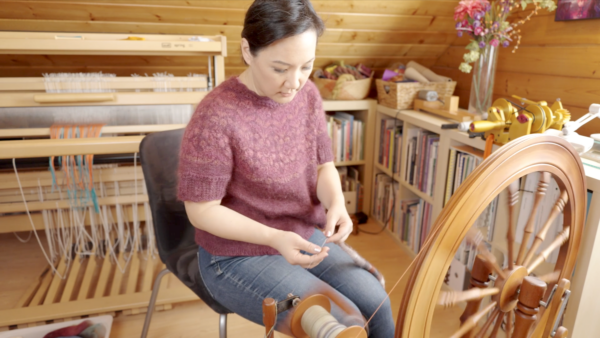
Long Draw on a Supported Spindle (Woollen)
-
Some spinners spin and draft at the same time, but Felicia prefers the control she gets with the "park and draft" method. To start, spin your spindle to build up twist.
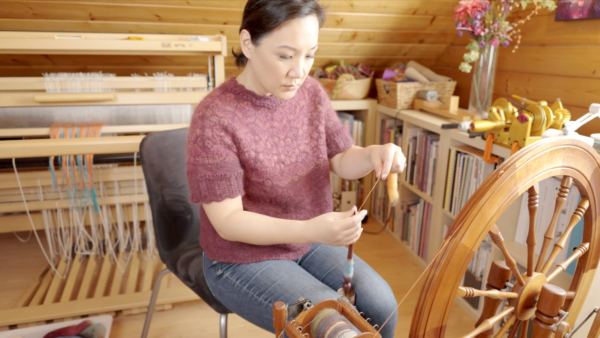
-
Just like with the wheel, use your spindle-spinning fingers to gatekeep the twist as you pull back with your fibre supply hand.
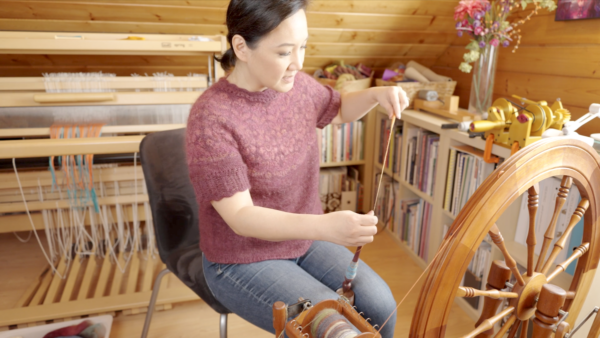
-
When you need more twist, stop and give your spindle another spin.
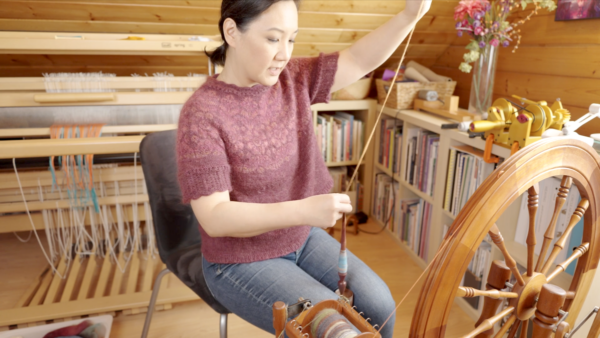
-
Continue in this way until the yarn is structurally sound and has the amount of twist you would like.
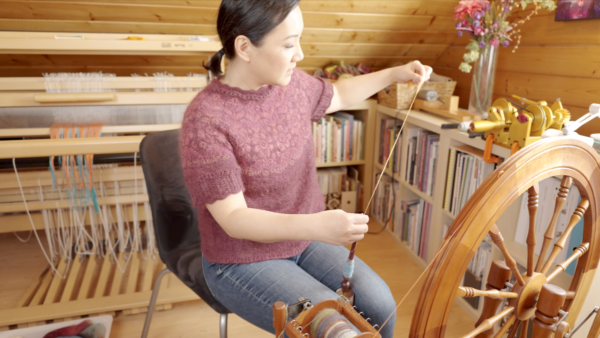
-
Wind it onto the cop!
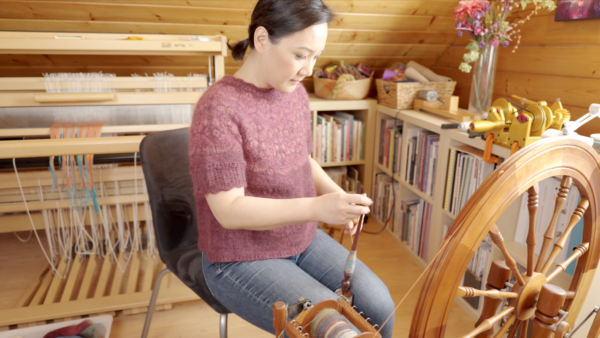
Managing Lumps or Bumps (Double Drafting)
-
This applies to both wheel and spindle spinning. Sometimes, a large slub may appear next to a thin spot; this is completely normal and common.
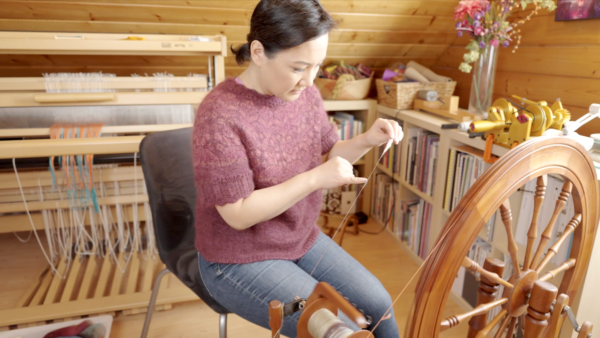
-
This is where the technique called double-drafting comes in. First we place our fingers on each side of the slub. Gently untwist the thicker areas.
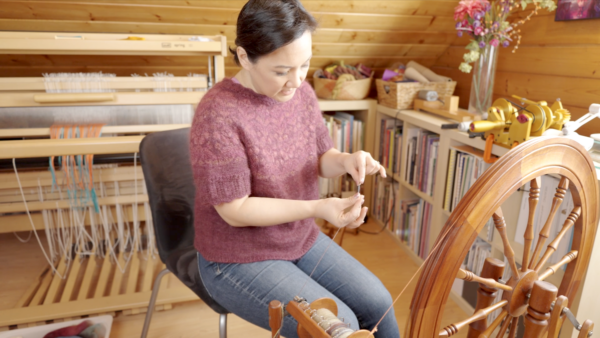
-
Manually draft out the slub.
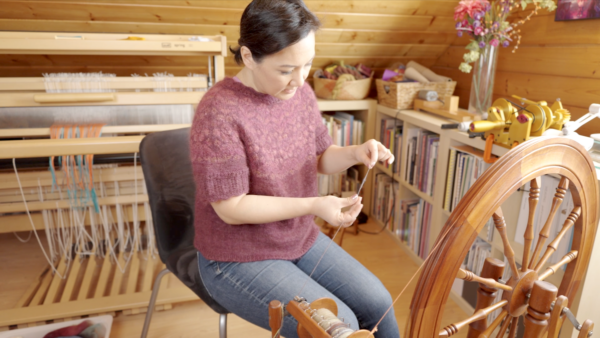
-
Release! The extra twist will move into the area, and if there isn’t enough, simply add more twist.
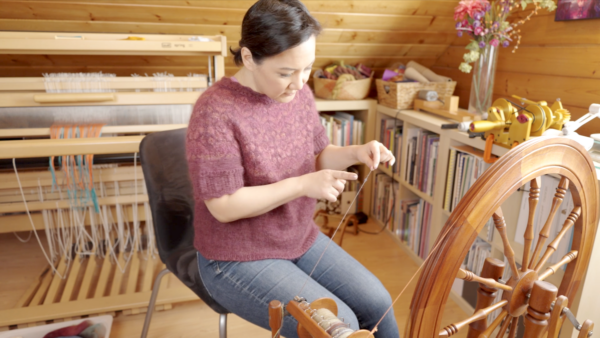
Notes
Here are a few things to keep in mind while spinning:
- Keep rolags open and airy: Avoid squishing them, and handle them lightly, like holding a baby bird.
- Experiment with different tools and materials: If spinning rolags or woollen style feels challenging, try switching to a wheel, e-spinner, spindle, or try another fibre like Corriedale or Targhee. Each offers a different and unique experience.
- Practice: As Felicia mentioned in the video, she doesn’t often spin woollen and prefers a park-and-draft technique on her supported spindle. Getting comfortable with a new tool, fibre prep, or technique takes time. Don’t be discouraged; keep practicing!
Looking to Learn More?
For guidance on long-draw spinning, making rolags, or fine-tuning your spinning skills, join us in the School of SweetGeorgia. Our instructors offer in-depth lessons to support you on your spinning journey. Looking for a casual fibre chat? Whether it’s spinning, weaving, knitting, crocheting, or more, come join us on the SweetGeorgia Discord server. We’d love to welcome you into our community!
The post Spinning Rolags Long Draw on a Wheel & Spindle is Magical! appeared first on SweetGeorgia Yarns.
Comments
Post a Comment